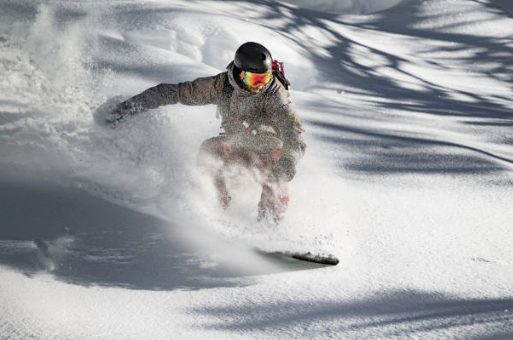As the winter season kicks in, many of us are eager to hit the slopes for some exhilarating snow sports action. However, along with the thrill comes the risk of injuries. Whether you’re a seasoned skier or a novice snowboarder, it’s crucial to take precautions to stay safe and injury-free on the snow-covered terrain. In this blog post, we’ll explore some essential tips to help you prevent injuries while enjoying your favourite winter activities.
Skiing and snowboarding are rigorous activities that unfold in a dynamic and ever-changing setting. These pursuits impose unique demands on our bodies, distinct from our daily routines, often resulting in fatigue, muscle soreness, or injury. Building muscle strength enhances their ability to handle this heightened strain, potentially mitigating muscle soreness and fatigue-related injuries.
Key muscle groups used for snowboarders
Abdominals: Essential for maintaining dynamic balance during turns, transitioning from heel to toe, and landing jumps, strong abdominals are crucial for snowboarders to execute maneuvers with precision and control.
Quadriceps: Observing a snowboarder’s stance, you’ll rarely see them standing fully upright; instead, they adopt a semi-squat position for balance, edge pressure, and shock absorption. Strong quadriceps improve the capacity to absorb impact through the knees, reducing muscle soreness and fatigue, enabling riders to maintain peak performance from the first lift to the last run.
Calves: Every snowboarder has likely felt the burning sensation in their calves after navigating a long cat track. Due to the configuration of boots and bindings, calf muscles are consistently engaged, making them susceptible to cramping. Strengthening calf muscles enhances their endurance, allowing them to better withstand the prolonged demands of a full day on the slopes.
Key muscle groups used for skiers
Abdominals: Similar to snowboarding, a strong core is indispensable for skiers to maintain balance on uneven surfaces and navigate challenging terrain with confidence and stability.
Hamstrings and Glutes: Given that each leg moves independently, having robust single-leg stability is essential for skiers. Strengthening the glutes enhances hip stability, facilitating balanced positioning during deep carves and ensuring smooth transitions across varied terrain.
Quadriceps: From the moment ski boots are donned in the morning, the quadriceps are actively engaged. Throughout the day, maintaining a slight knee bend puts continuous strain on these muscles. Strengthening quadriceps alleviates pressure on knee joints and minimizes the impact on the body from absorbing bumps and landing jumps.
Tips for injury prevention at the snow
Warm Up Before Hitting the Slopes: Just like any other physical activity, warming up is essential before engaging in snow sports. Start with some dynamic stretches to loosen up your muscles and increase blood flow. This will prepare your body for the demands of skiing or snowboarding and reduce the risk of strains or sprains. This can include single leg RDLs, single leg calf raises and thoracic mobility exercises.
Strength and Conditioning Program: a comprehensive sport-specific exercise program can help reduce injuries at the snow. If you are unsure about the type of exercises you should be doing for your sport then reach out to one of our friendly Myphysio physiotherapists. Our physiotherapists will be able to analyse specific impairments you may have and build you a tailored program to help you perform optimally at the snow. This may involve ski specific exercises that include squats, box jumps, wall sits and lunges.
Practice Proper Technique: Whether you’re skiing or snowboarding, mastering the correct technique is key to preventing injuries. Enrol in lessons or clinics to learn proper form and techniques from certified instructors. Focus on maintaining good posture, keeping your knees bent, and using your core muscles to control your movements effectively.
By following these tips and prioritizing safety, you can minimize the risk of injuries and enjoy a fun-filled day on the snow. Remember, the goal is to have a memorable and injury-free winter sports season, so always prioritize safety first. In the month of May 2024, Myphysio is offering 50% off initial consultation for new patients. Mention BLOG50 at checkout to receive your discount and get your rehabilitation journey started with our friendly Myphysio physiotherapist.
This information is for educational purposes only and is not intended to replace the advice of your doctor or health care professional. We encourage you to discuss any questions or concerns you may have with your health care provider.

